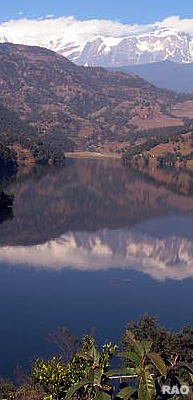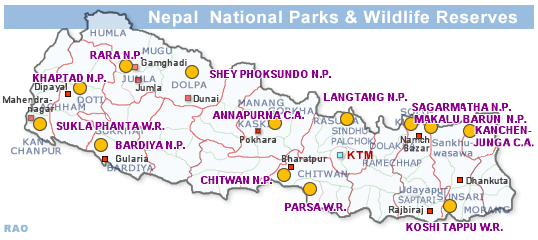The
existing as many as six National parks, including four Wildlife
Reserves and a Hunting reserve in total occupy more than 7.30 percent
lead area of the most contrasting and spectacular natural lanscape
in the world. They exhibit every different type of altitudinal geographical
features and changing vegetation from the barren steppe of the trans-Himalayan
region in the extreme north; the hemlock, deodar and firn trees of
the higher altitude valleys and hills; pine and rhododendron of
the intermediate altitude to the great sal (shorea robusta) forests of the Terai and dun valleys in the southern region.
Almost
one hundred different species of mammals and more than 800 species
of birds survive in their natural habitat in these National parks of
Nepal.
The
Chitwan National Park has so far successfully managed to preserve and save
some of the most rare animals in threatening peril by protecting them in
its sprawling jungles.
The chief
aims of the National parks and Reserves are, primarily, to ensure
the conservation and management of the natural resources and
environment, including the flora and fauna as well as their habitats,
and secondly, to develop and promote nature and wild life tourism,
where suitable in such areas possessing tourist attractions, so
long as these activities are not detrimental to the implementation of conservation
programmes. |






